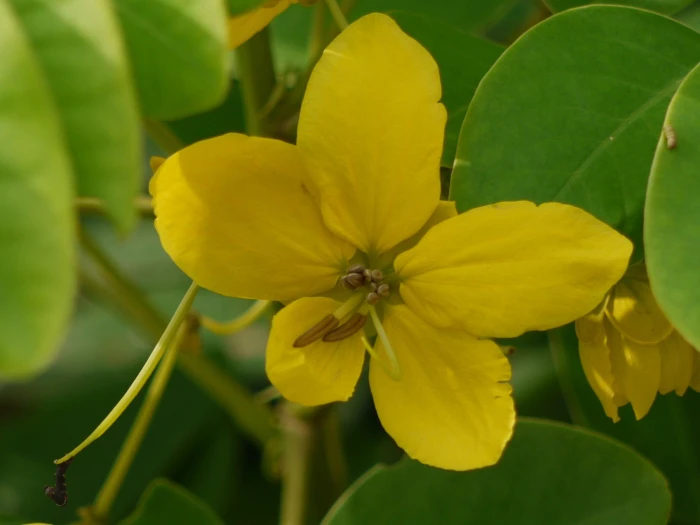Sulphur Senna
(Senna sulfurea)
Sulphur Senna (Senna sulfurea)
/
/

© Dinesh Valke
CC BY-SA 4.0
Image By:
© Dinesh Valke
Recorded By:
Copyright:
CC BY-SA 4.0
Copyright Notice:
Photo by: © Dinesh Valke | License Type: CC BY-SA 4.0 | License URL: http://creativecommons.org/licenses/by-sa/4.0/ | Uploader: dineshvalke | Publisher: iNaturalist |

























Estimated Native Range
Climate Requirements for Jaipur, India
| This Plant | Your Site | Plant Suitability for Your Location | ||
|---|---|---|---|---|
| • Precipitation | 3" - 144" | 25" | Your precipitation may be insufficient for this plant. Irrigate N" / year. | Irrigate N" / year |
| • High Temp. | 80°F - 109°F | 103°F | Your summer temperatures are normal for this plant. | Excellent |
| • Low Temp. | 38°F - 73°F | 47°F | Your winter temperatures are normal for this plant | Excellent |
This plant should grow well at your location with about N inches per year (Y minutes per month) of irrigation.
Summary
Senna sulfurea, commonly known as Sulphur Senna, is a perennial shrub native to the Indian subcontinent. It can grow up to 2-3 meters tall and equally wide, with a rounded form. Sulphur Senna is recognized for its bright yellow, butterfly-attracting flowers that bloom throughout the year, particularly in warmer climates. The plant’s foliage is also noteworthy, with pinnate leaves that are green to gray-green in color.
Sulphur Senna is valued for its drought tolerance and continuous flowering, making it a popular choice for tropical and subtropical landscapes. It is often used for hedging, ornamental displays, and as a specimen plant. In cultivation, it thrives in full sun and requires well-drained soils. While it is adaptable to a range of soil types, it performs best in soils that are moderately fertile. Regular pruning can help maintain its shape and promote denser foliage. Sulphur Senna is generally pest-resistant but can be susceptible to root rot if overwatered or planted in poorly drained soils. It is not known to be invasive outside its native range but should be monitored to ensure it does not become a problem.CC BY-SA 4.0
Sulphur Senna is valued for its drought tolerance and continuous flowering, making it a popular choice for tropical and subtropical landscapes. It is often used for hedging, ornamental displays, and as a specimen plant. In cultivation, it thrives in full sun and requires well-drained soils. While it is adaptable to a range of soil types, it performs best in soils that are moderately fertile. Regular pruning can help maintain its shape and promote denser foliage. Sulphur Senna is generally pest-resistant but can be susceptible to root rot if overwatered or planted in poorly drained soils. It is not known to be invasive outside its native range but should be monitored to ensure it does not become a problem.CC BY-SA 4.0
Plant Description
- Plant Type: Shrub, Tree
- Height: 2-3 feet
- Width: 2-3 feet
- Growth Rate: Rapid
- Flower Color: Yellow
- Flowering Season: Summer, Fall
- Leaf Retention: Deciduous, Semi-deciduous
Growth Requirements
- Sun: Full Sun
- Water: Low
- Drainage: Fast
Common Uses
Bird Garden, Butterfly Garden, Drought Tolerant, Low Maintenance, Showy Flowers
Other Names
Common Names: Sulfur Senna, Sulfur Pea
Scientific Names: Senna sulfurea, Cassia arborescens, Cassia enneaphylla, Cassia enneaphylla, Cassia glauca, Cassia petropolitana, Cassia sieberi, Cassia sulfurea, Cassia sulfurea
GBIF Accepted Name: Senna sulfurea